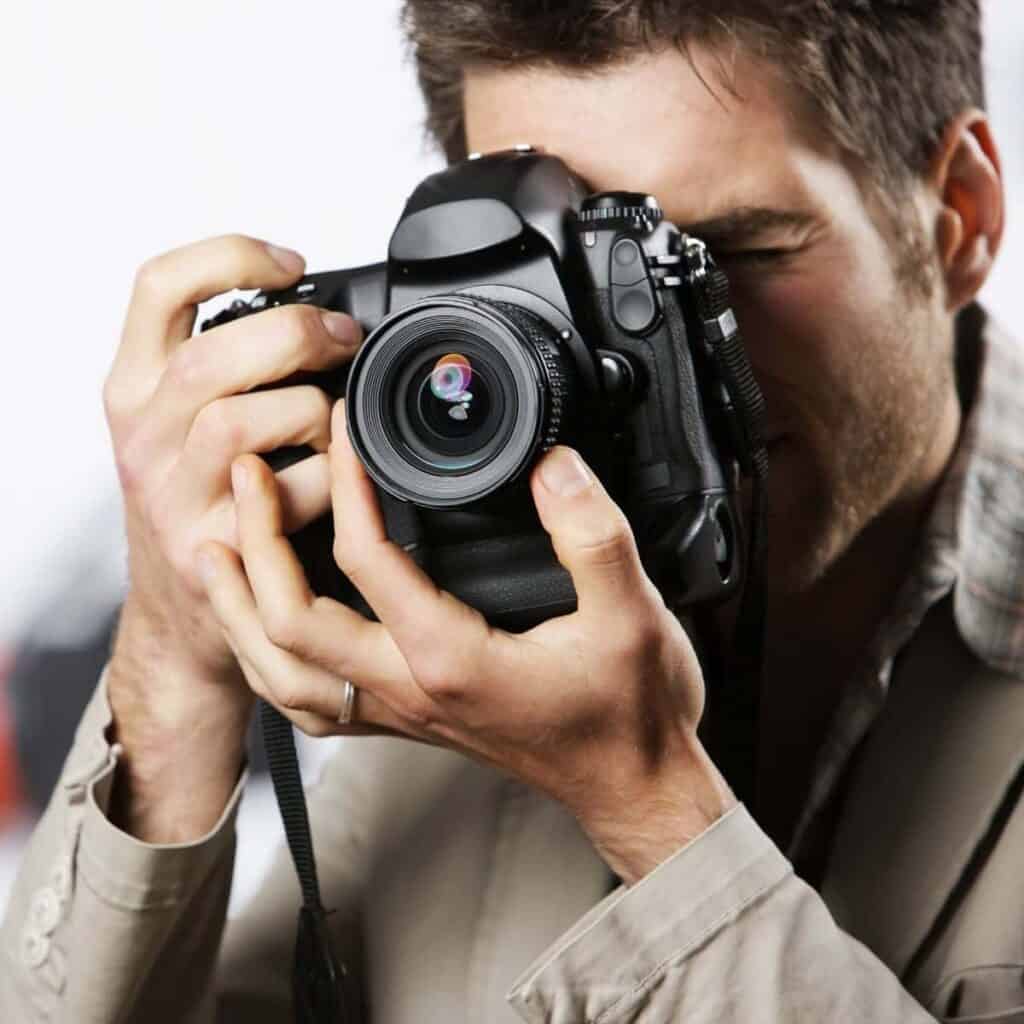Back-button focus is a technique that puts a button on the back of your camera is in charge of focusing. It’s no longer the shutter button.

What’s back-button focus?
When you’re using autofocus to take a photo, the shutter button on your camera has two roles. When you first press down, it’ll solidify the focus. When you press it all the way down, it’ll snap the photo.
Related: What’s exposure bracketing in photography?
Back-button focus is a camera technique that removes the focusing role from the shutter release. Instead, a button on the back of your camera will be in charge of autofocus. The shutter is now responsible solely for taking the photo.
Whether you’re using a mirrorless or DSLR camera, most modern digital cameras have a button dedicated to back-button focusing. It’s labeled as AF-ON, which stands for Autofocus On. However, you can set it up as any of the buttons.
When using back-button focus, you’ll press the AF-ON button with your thumb and press the shutter release with your finger to take the photo. As you use it, you’ll quickly realize how intuitive and natural it feels.
Capturing photos with sharp focus is a challenging area. When you’re using selective focus, it can be even harder because the area that’s in focus is smaller.
Switching your camera to back-button focus will ensure that you capture a crisp photo where the focus is where it needs to be. Learn the benefits and drawbacks to understand how it can impact your photography.
Benefits
After switching to back-button focus, you won’t want to switch back. The benefits of using back-button focus are as follows:
1. Increase efficiency
The main reason to start using it is that it’ll make you a more efficient photographer. By reducing focusing errors, you’ll be able to capture photos in good focus more often.
Let’s face it, autofocus isn’t perfect, and back-button focus won’t make your images sharper. However, it’s an excellent way to quickly and accurately capture sharp images. Overall, you’ll take fewer photos because you’ll have more that are in focus.
2. Lock the focus
Aside from efficiency, it allows you to lock your focus without holding the shutter button halfway down. By separating the focusing function from the shutter button, you’ll no longer have to refocus anytime you take your finger off.
Some cameras have a focus lock button, which is very helpful. However, back-button focus eliminates the need for an extra button. All you have to do is press and hold to lock the focus.
3. Easily change focus modes
Without back-button focus, you’ll manually select the focusing mode before taking a photo. By using back-button focus, you can easily switch between manual, single, and continuous focus.
Related: How to use manual mode
To use manual focus, don’t press the AF-ON button. Instead, turn the focus ring to find the perfect focal point. If your subject isn’t moving, use single focus by pressing the button once. For moving subjects, the continuous focus mode is the most helpful. You can use it by pressing and holding the back-button focus.
Your thumb now has the power to switch between focus modes. This allows you to work quickly, and you’ll no longer miss the perfect shot due to trying to change the focus mode.
4. Focus on other aspects
The time you would’ve spent refocusing can now be spent finding the best composition, white balance, and exposure. It allows you to focus on other aspects that make a photo great.
By no longer worrying about focusing, you can also experiment with different types of photos and angles. It’ll help you be more creative and grow as a photographer.
Drawbacks
Back-button focusing has many benefits and very few drawbacks. The main drawback is that it takes time to get used to. If you’re new to photography or have always used the shutter button for autofocusing, it’s going to take time.
Like with all changes, it’ll feel uncomfortable at first. With time and practice, it’ll begin to feel natural. The results that you get from it will make you wonder how you did it any other way.
Another potential drawback is shooting in freezing temperatures. Your fingers don’t move as easily when it’s cold. So, using the shutter button for autofocusing and snapping the photo is easier.
How to set it up
Setting up back-button focus is different based on the camera that you have. The following are the steps for Canon, Nikon, and Sony cameras.
Canon
Take the following steps to set up back-button focus on Canon cameras:
- Press the Menu button.
- Scroll to Custom Controls, which is also labeled as C. Fn.
- Click C.Fn III:Operation/Others.
- On the LCD screen, there’ll be a box around the number 4. Click the Set button.
- Click Shutter butt. half-press.
- Change it from Metering and AF start to Metering start.
- Click Menu to go back.
- Scroll to AF-ON and click AF-ON.
- Set AF-ON to Metering and AF start.
Nikon
Take the following steps to set up back-button focus on Nikon cameras:
- Open Custom Settings Menu (pencil icon).
- Click a – Autofocus.
- Click a4 – Af activation.
- Select AF-ON only.
If your Nikon camera doesn’t have the AF-ON button, you must go to the Assign AE-L/AF-L Button tab to set it up. The AE-L or AF-L button will be used for back-button focusing.
Sony
Take the following steps to set up back-button focus on Sony cameras:
- Click the Menu button.
- Scroll to the AF2 tab.
- Click AF w/ shutter.
- Select Off.
For Sony mirrorless cameras, the AF-ON button may also be labeled as AF/MF.
Conclusion
The benefits of using back-button focus outweigh the drawbacks. By implementing it, you’ll be more efficient and capture more photos in sharp focus. While it takes time to get used to, it’ll feel more natural and help you grow as a photographer.
Featured image courtesy of Canva.
